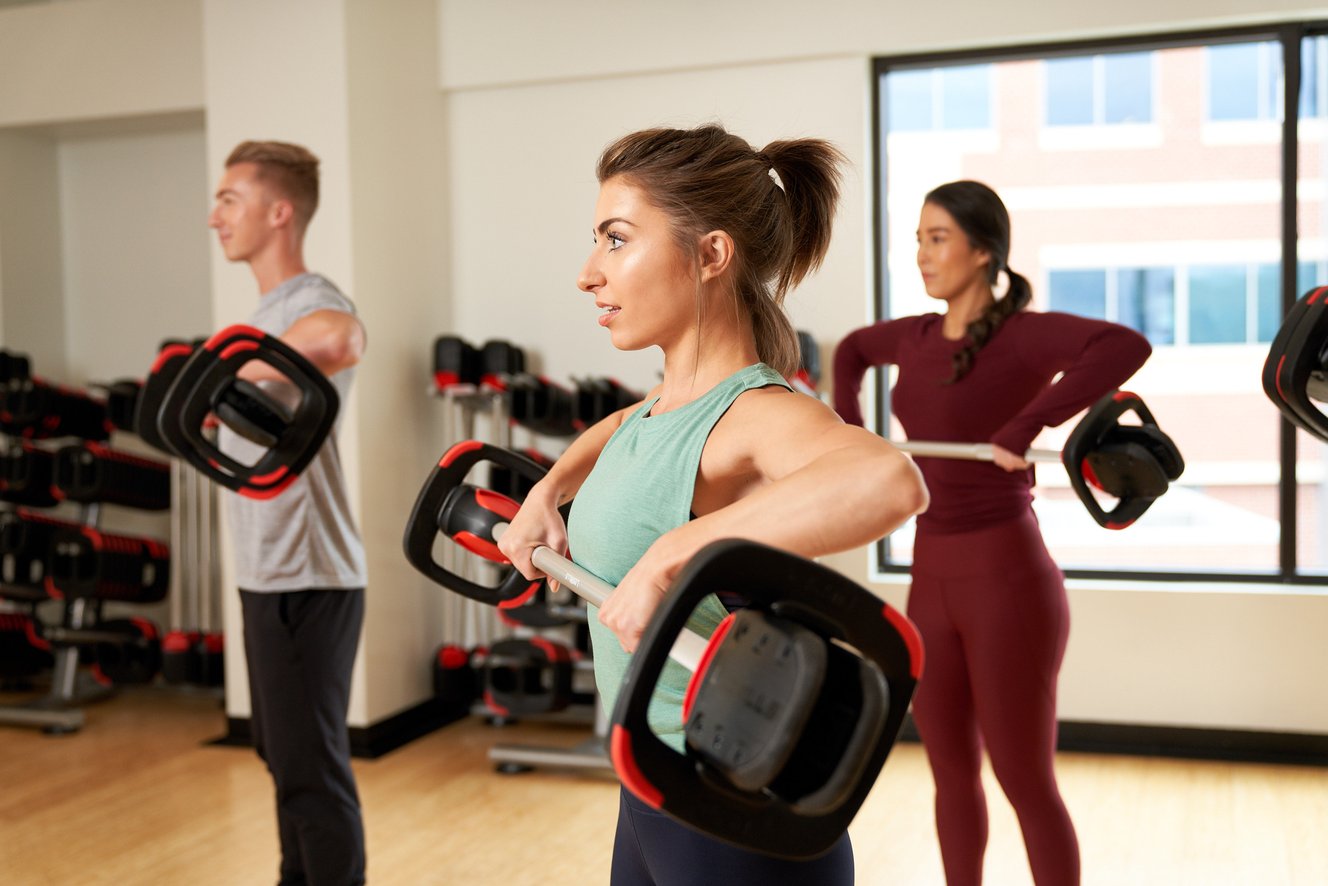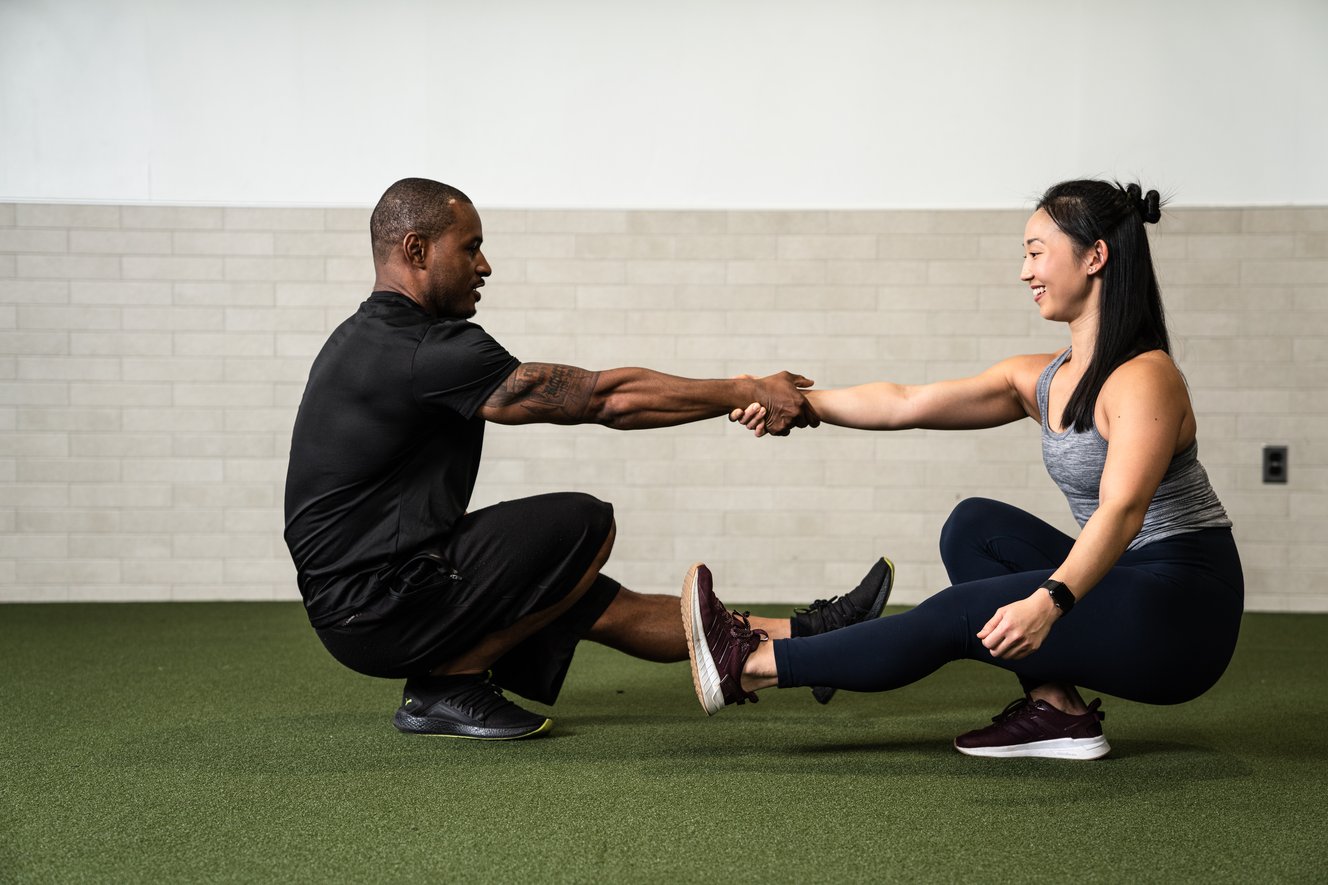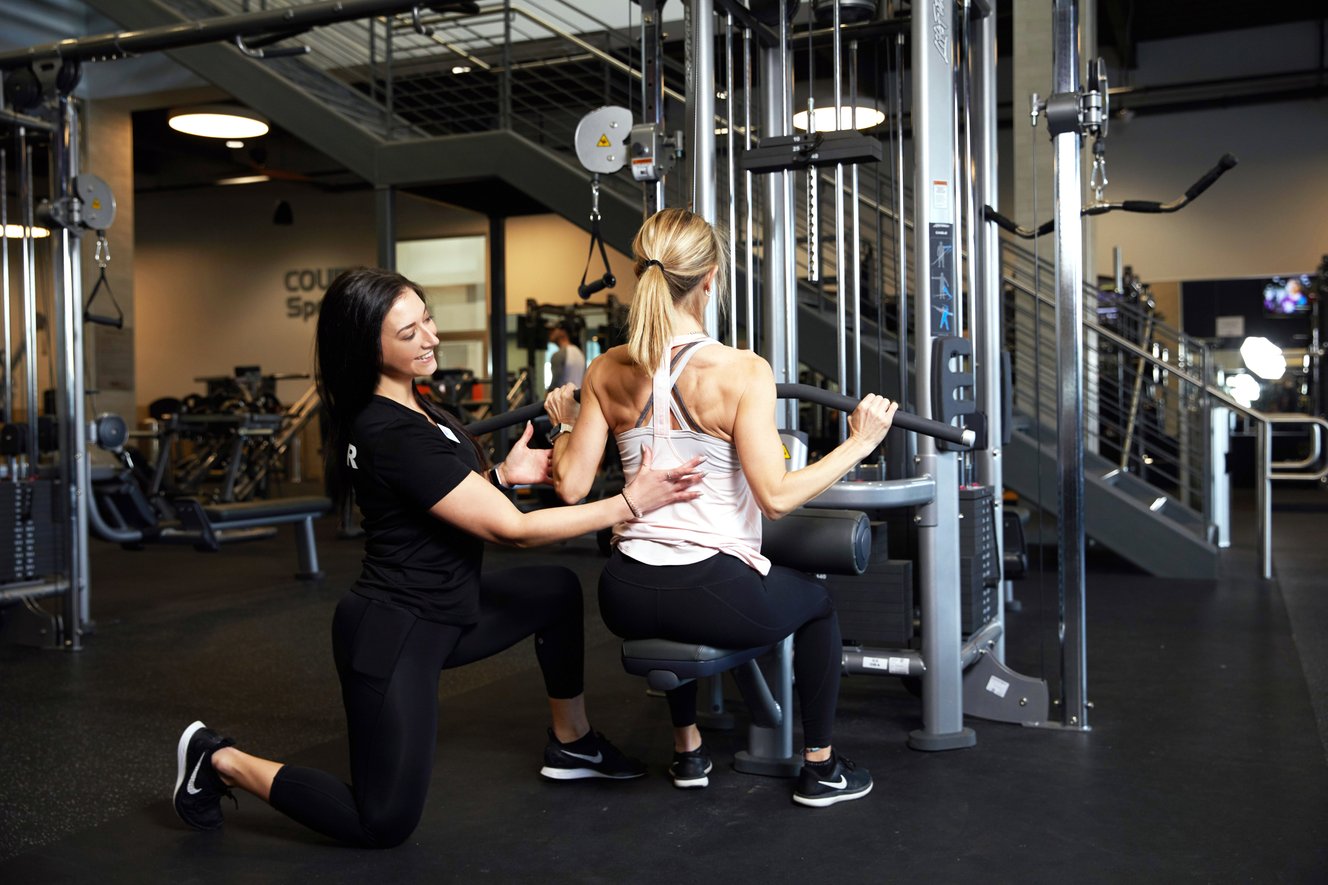The Ultimate Guide To Reps And Sets In The Gym
The Ultimate Guide To Reps And Sets In The Gym
Ever feel like you're just spinning your wheels at the gym, pumping iron without any real results? You're not alone.
But what if I told you that the secret to unlocking your full workout potential could be as simple as understanding reps and sets better?
Imagine yourself stepping into the gym, knowing exactly how many reps and sets to do for optimal muscle growth or fat loss. Picture a future where every workout brings visible progress because it's tailored precisely to your fitness goals. Exciting, right?
This guide will give you all that knowledge and more: safety considerations during workouts, effective rest periods between sets...you name it! It's time to turn those sweat sessions into success stories!
What Are Reps And Sets And What Are Their Benefits?
In the fitness world, 'reps' and 'sets' are as fundamental as dumbbells and treadmills. What's the significance of 'reps' and 'sets'? A rep (short for repetition) is one complete motion of an exercise, like a single bicep curl or squat. A set is a group of consecutive reps without resting.
Understanding reps and sets gives you more control over your workout intensity and duration. It's like knowing how many miles to run or laps to swim - it helps structure your training sessions.
The benefits go beyond just organization, though. By carefully managing your reps and sets, you can tailor workouts towards specific goals such as strength gain, muscle growth, or endurance improvement.
Studies have shown that different combinations of reps and sets can stimulate different types of muscular adaptations. High-repetition low-set routines improve muscular endurance, while lower-repetition high-set routines help develop raw strength.
- A higher number of repetitions with lighter weights will work on improving muscle tone and endurance.
- Fewer repetitions with heavier weights will aim at increasing muscle size and power.
Besides influencing physical outcomes, varying your set-and-rep schemes also keeps workouts fresh – breaking monotony while challenging muscles differently each time. So whether you're trying to bulk up or slim down, a unique combination awaits you.
How Many Reps And Sets Should You Do?
The exact number of reps and sets you should do depends on your fitness objectives. The NSCA recommends doing 1-6 reps for strength, 6-12 for muscle growth, and more than 15 repetitions to build endurance.
If lifting heavy weights to build strength or muscle mass, aim to lift heavier weights and complete fewer repetitions - anywhere from one to six per set. If your goal is general fitness or fat loss, opt more towards high-volume workouts with lighter weights, which can be performed up to fifteen times per set.
In terms of sets, research indicates that multiple-set routines are superior when it comes to enhancing both muscular strength and size.
This doesn't mean you need three different exercises for every body part but rather dividing different workout reps into separate 'sets.'
So if we decided on doing four total sets with eight repetitions each time—that's four rounds (or 'sets') where you lift the weight eight times ('reps'). Rest between these mini-rounds lets your muscles recover enough to give their best effort again.
Remember: Quality trumps quantity. Focus on executing each rep with perfect form, even if it means doing fewer reps or sets. And always listen to your body—it knows best when you've had enough for the day.
Understanding The Different Workout Goals
Your gym routine isn't solely about lifting weights or pounding the treadmill; it's more about achieving particular fitness objectives, which can differ from one individual to another. Achieving individual fitness objectives is the primary purpose of a gym or workout program, and these can differ from one person to another.
If your goal is general fitness, you might focus on a mix of cardio and strength training exercises. This helps keep your heart healthy and muscles toned. A routine could include swimming laps in our pool at Onelife Fitness or joining one of our diverse group classes.
On the other hand, strength training targets muscle building through heavier weightlifting with fewer reps. Our cutting-edge performance training centers are ideal for an objective exercise and weight training session.
Muscle Growth And Power Training
Moderate weight with high repetitions increases muscle growth because it stresses muscles, leading to muscle hypertrophy - when your cells grow bigger.
In contrast, powerlifters need explosive energy bursts for very short durations; thus, they focus primarily on low-repetition, high-weight workouts that enhance their power capabilities.
Fat Loss Workouts
Last but not least comes fat loss goals. To burn fat efficiently and lose weight, you'll want a blend of cardio sessions and strength-training workouts while maintaining an eye over diet plans. Our Nutrition Services team can help plan this out effectively.
Types of Reps and Sets

If you're hitting the gym, understanding different types of reps and sets can help optimize your workout. No single approach is suitable for everyone since these factors can directly influence your objectives related to fitness.
Traditional Strength Training
In traditional strength training, 1-6 reps per set are typically used with heavier weights. This low-repetition range aims to build muscle and increase raw power by stressing the muscles.
Hypertrophy Training For Muscle Building
The ideal range for building muscles is typically 8-12 reps per set, providing a balance between the heaviness of the weight and how long it's held under tension to foster muscular growth.
Doing this will help you achieve a balance between training volume, weight lifted, and time under tension that triggers muscular growth.
Endurance Training
Moving into higher rep ranges like 15+ in a set targets endurance improvement. You'll use lighter weights but do more reps, which helps improve cardiovascular health while toning muscles.
Switching up your workouts regularly allows for better overall development because each type offers unique benefits.
Repetition Range
Your repetition or rep range is crucial in your workout regimen. Reps can affect your gains; they determine how much pressure your muscles are under.
A common approach for general fitness involves using a moderate rep range, usually around 8-12 reps per set. This offers a balance between muscle and maximal strength gains and size gains.
Onelife Fitness personal trainers have more detailed information if you want to dive deeper into this topic.
If gaining raw strength is your goal, then low reps with high weight might be right up your alley. A typical powerlifter might only do about 1-5 reps per set but at very heavy weights.
Conversely, endurance training often uses higher repetitions (15+) with lower weights to boost stamina and cardiovascular health while still promoting some muscle growth.
No matter what goals drive you towards sweating it out at Onelife Fitness centers across the East Coast United States, find one near here; understanding how different repetition ranges affect your body will help tailor workouts that are right for you.
Remember: Each individual’s ideal repetition count may vary based on fitness level, age, muscle group, or genetics.
Rest Periods Between Sets
Taking a break between sets can immensely affect the outcome of your exercise routine. But how long should that be? It's not one-size-fits-all.
If strength training is your goal, longer 3-5 minutes of rest will let you lift heavier weights. Moderate breaks of 1-2 minutes work best for building muscle size.
Studies show that resting too little may compromise the quality of your next set. Yet, taking too long might cool down muscles and hinder performance.
Finding Your Perfect Rest Interval
Your perfect rest interval depends on what works for you and the goals of your workout routine at Onelife Fitness gym.
To determine this sweet spot, pay attention to how recovered you feel before starting another set. Adjust timings until it feels right - listen to your body if needed.
Tailoring Rest Intervals According To Goals
Training with specific goals requires tailoring these intervals accordingly:
- Fat Loss: Aim for shorter rests (30 seconds – 1 minute) to keep your heart rate up and burn more calories.
- Muscle Growth: A slightly longer break (1–2 minutes) allows muscles sufficient recovery for optimal growth response.
- Strength Gains: Opt for even longer rests (3–5 minutes) to lift heavy consistently throughout all sets without fatiguing early.
Safety Considerations

When pumping out reps and sets, safety should be your top priority. Ignoring proper form or pushing past your limits can lead to injuries that could set you back weeks, if not more.
The first rule of thumb is never to lift alone. A spotter gives an extra layer of security during heavy lifts, helping you avoid injury when things get tough. You can also use Onelife Fitness's certified personal trainers; they are trained to ensure safe lifting techniques.
Maintaining Proper Form
Your posture matters a lot while performing any exercise at the gym. An incorrect position might result in strains or sprains. Remember to learn the correct form before adding weights - remember quality over quantity.
Avoiding Overexertion
Pushing yourself too hard won't help you reach your goals faster, but it may slow down progress due to potential injuries like pulled muscles or tendonitis. Listen carefully to what your body tells you; there’s a difference between good pain (muscle fatigue) and bad pain (injury).
Using Appropriate Equipment
Gym equipment must be used correctly for effective results and to avoid harm. Onelife Fitness blog posts provide tips on utilizing gym tools safely.
Remember: It's not about how much weight we lift – it's about challenging weight and doing it right. Stay smart in the gym with these safety considerations.
Progress Tracking
Knowing your reps and sets is just the start. To make real progress, you need to track them consistently. This provides a comprehensive view of how one is progressing and where additional effort is needed.
Luckily, there are plenty of ways to track workout details easily today. You could use classic pen-and-paper logs, but tech-savvy folks might prefer fitness apps. These allow easy inputting reps & sets after each exercise session at Onelife Fitness gyms across the East Coast.
Paper logbook – This is a simple yet effective way for jotting down every rep and set completed during sessions.
Fitness app – Offers detailed insights into performance trends besides allowing seamless recording of exercises.
Gym-provided tools – Some facilities offer tracking software, making it easier to keep track of progress.
Remember, consistent progress tracking is crucial in any fitness journey. It’s the only surefire way to know if you’re getting stronger and more fit over time.
Should You Switch Up Your Set and Rep Schemes?

"Every person is unique, and so should be their workout," says Wall. While there are basic scientific principles guiding the design of your gym sessions, remember that it's okay to adjust the number of reps and sets you do according to your individual needs.
The best rep amount is not universal but varies by what works for you. Maybe you notice that doing fewer reps in more sets is better for your legs than your upper body. Or perhaps pushing exercises come easier to you than pulling ones.
At Onelife Fitness, we emphasize customization in our training plans – ensuring they align with each member's unique fitness goals and capabilities.
Finding What Works Best for You
Your personal strength zones can also play into this equation. If your bench press and presses are a breeze, but lunges leave you winded, mixing up how many reps or sets you do for these different exercises makes sense.
You're not just stuck with a set number; feel free to experiment until things click. Remember: It's all about finding what gets results while still being enjoyable - because if working out feels like torture, chances are good it won't become a habit.
A Word About Workout Variability & Muscular Endurance
Variation is key in any successful fitness plan — from day-to-day workouts to long-term progressions. In the same way, professional athletes use periodization strategies to avoid plateaus; switching up your set and rep schemes can keep you from getting stuck in a rut, physically or mentally.
So go ahead. Mix things up. Your muscles — and your motivation — will thank you for it.
FAQs
How many sets and reps should I do in the gym?
This hinges on your fitness goals. For strength, 1-6 reps of 2-6 sets; for muscle size, 8-12 reps of 3-5 sets; for endurance, over 15 reps of multiple sets.
How do you do reps and sets at the gym?
Pick an exercise and perform a certain number (reps) without rest. That's one rep per set. Rest before repeating this cycle.
How many reps should I do in each set?
Aim between one rep max and six to twelve repetitions per set for muscle growth. But adjust according to your specific training objectives.
What is the best number of sets at the gym?
The ideal number varies based on the advice from your personal trainer and on goals but typically ranges from two to five sets per exercise during a workout.
Conclusion
So, we've fully covered this ultimate guide to reps and sets in the gym. You're now armed with knowledge that can transform your workouts.
Remember, it's not just the amount you lift but the frequency (reps) and duration (sets).
Your workout goals dictate everything - from rep ranges to the rest time and periods between sets. And don't forget safety!
Varying your set and rep schemes keeps things fresh while catering to individual strengths.
Now, get out there! Make every workout count by applying what you've learned here today.
Contact Onelife Fitness for all your fitness questions and gym classes across GA, MD, VA, DC & WV. We look forward to helping you on your health and fitness journey!